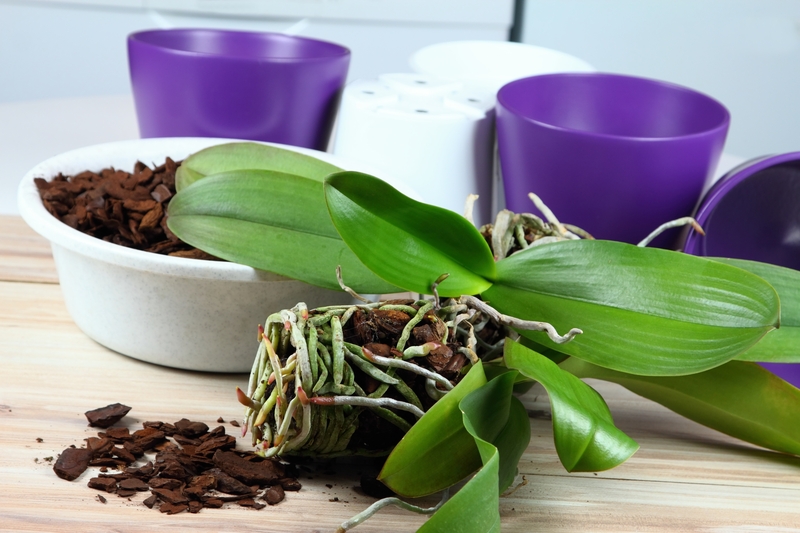Nature's Peace: Designing an Outdoor Zen Retreat
Posted on 16/09/2025
Nature's Peace: Designing an Outdoor Zen Retreat
Unlock the tranquility of your natural surroundings by creating an outdoor Zen retreat at home. There's something magical about spending time outdoors -- it calms the mind, awakens the senses, and connects us to the harmony of the world. Whether you have a sprawling backyard or a small patio, you can design a serene outdoor space that nurtures peace, relaxation, and mindfulness. In this comprehensive guide, we'll explore how to merge landscaping, minimalism, and intentional design to construct your very own Zen-inspired garden sanctuary.

What Is an Outdoor Zen Retreat?
A Zen retreat is more than just a garden -- it's a thoughtfully curated sanctuary inspired by traditional Japanese Zen philosophy. These spaces emphasize simplicity, natural elements, and purposeful landscaping to foster stillness, contemplation, and inner calm. The principles of Zen design center around balance, asymmetry, and harmony with nature.
Creating an outdoor Zen retreat is an invitation to slow down, embrace gentle quietude, and restore your well-being. While rooted in ancient traditions, these gardens can be seamlessly integrated into modern outdoor spaces, providing a restorative haven amidst the chaos of daily life.
Benefits of Designing a Zen Garden Retreat
- Reducing Stress: Immersing yourself in peaceful, natural spaces has been proven to lower stress hormones and improve mental clarity.
- Promoting Mindfulness: The careful details and simplicity of Zen gardens encourage living in the present moment.
- Enhancing Outdoor Living: Your garden becomes a usable extension of your home for meditation, yoga, or relaxation.
- Boosting Curb Appeal: Thoughtfully designed Zen sanctuaries add value, beauty, and visual tranquility to any home.
Key Elements of a Zen Outdoor Sanctuary
1. Simplicity and Minimalism
The foundation of any Zen retreat is minimalistic design. Avoid clutter and excessive ornamentation; every element should serve a purpose and contribute to the overall harmony. Open spaces, neutral colors, and clean lines invite calmness and foster a meditative atmosphere.
2. Natural Materials and Textures
Incorporate organic materials wherever possible. Elements such as stone, gravel, bamboo, wood, and water not only reference the natural world, but also age beautifully. Mixing these textures--smooth pebbles, rough bark, polished stones--enhances sensory experience and echoes nature's diversity.
3. Water Features
The soft murmur of water -- whether from a koi pond, trickling fountain, or modest birdbath -- is the heartbeat of many Zen gardens. Running water brings a cooling effect, attracts wildlife, and creates gentle soundscapes, perfect for outdoor meditation and reflection.
4. Thoughtful Plant Selection
Choose greenery that supports tranquility and seasonal interest. Bamboo, moss, ferns, and evergreens are classic. Incorporate trees like Japanese maples or pines, emphasizing natural forms and textural contrast. Low-maintenance, drought-tolerant plants allow you to enjoy a lush retreat with minimal effort.
5. Pathways and Stones
Paths of stepping stones, crushed gravel, or flagstones invite slow, mindful walking. These pathways delineate space, guide movement, and symbolize life's journey. Use rocks and boulders as focal points, seating, or natural sculpture -- their irregularity brings a sense of grounded stability.
6. Comfortable Seating Areas
Intentionally placed seating--such as a simple wooden bench, stone slab, or floor cushions--provides a spot for meditation, yoga, tea, or simply soaking in the view. Oriented to overlook key features like water, trees, or a garden sculpture, these sanctuaries support rest and contemplation.
7. Enclosure and Privacy
A sense of seclusion is essential for fostering restfulness. Use natural fencing, bamboo screens, hedges, trellises with climbing plants, or carefully positioned shrubs and trees to frame your retreat. Even in small spaces, strategic plantings or lattices can create intimacy and shield against noise or distractions.
Step-By-Step Guide: Designing Your Outdoor Zen Retreat
Step 1: Assess Your Space
Examine your outdoor area, considering sunlight, shade, noise levels, and existing plantings. Sketch a simple plan noting fixed features (trees, fences, walls) and areas you want to highlight (views, cozy corners). Even a small balcony or rooftop can be transformed into a serene retreat with clever design!
Step 2: Set Your Intention
What do you hope to gain from your tranquil retreat? Meditation, quiet reading, yoga, or hosting friends? Clarifying your goals will guide all design decisions, from layout to materials.
Step 3: Choose a Focal Point
All classic Zen gardens include a focal point--perhaps a sculptural stone, elegant bonsai, water feature, or a contemplative statue. This element anchors your sanctuary and draws the eye, encouraging stillness and reflection.
Step 4: Plan Pathways and Circulation
- Use stepping stones or gravel paths to define subtle routes.
- Embrace gentle curves rather than rigid straight lines for a natural look.
- Create places where paths widen or end, inviting pause or seating.
Step 5: Integrate Water Elements
- Ponds: For the ultimate tranquility, install a gravel-edged, shallow pond or koi pond with aquatic plants.
- Fountains: Add a bubbling or trickling fountain for movement and sound, even in tight spaces. Solar-powered units are eco-friendly and low maintenance.
- Water bowls or birdbaths: Simple and elegant options that invite birds and wildlife.
Step 6: Select Plants for Harmony
- Bamboo: Versatile and fast-growing for privacy and movement.
- Moss and ferns: For subtle texture and a sense of age or tranquility.
- Evergreens: Year-round interest. Try Japanese black pine, cedars, or spruces.
- Seasonal blooms: Add a punch of color with irises, camellias, or azaleas for spring.
Step 7: Add Stones and Decorative Features
- Place rocks asymmetrically, alone or in groups, to evoke landscapes or mountains.
- Consider a stone lantern (ishi-doro) for subtle light and classic beauty.
- Add gravel or sand "sea" for raking meditation patterns.
Step 8: Define Seating and Meditation Zones
- Choose weatherproof benches, cushions, or low platforms.
- Position seating to face your garden's focal point.
- Add a tea table or modest pavilion for relaxation or rituals.
Step 9: Frame Your Sanctuary with Enclosure
- Use bamboo screens, trellises, or hedges to obscure urban noise and create intimacy.
- Consider an arched gate or stepping-stone entrance to signify transition from the 'outer' world to the 'inner' sanctuary.
Tips for Maintaining Harmony in Your Zen Garden
- Embrace change: Your Zen retreat will evolve through the seasons. Prune, refresh plants, and adjust features as needed while minding balance and simplicity.
- Notice details: Meditation in your garden is as much about observing moss growing between stones as it is about stillness of mind.
- Limit distractions: Keep accessories, furniture, and ornamentation minimal. Each addition should serve peace and beauty.
Design Inspirations: Outdoor Zen Retreat Ideas
Mini Zen Courtyard
Transform a small outdoor patio with gravel, a trickling pot fountain, bamboo screen, and a single Japanese maple. Add a floor cushion for meditation and a stone for raking patterns.
Woodland Oasis
Nestle a meditation bench within a grove of ferns and evergreens. Use boulders and a winding path to create a sense of discovery and privacy. Add a koi pond with stone bridges.
Modern Zen Rooftop
On a rooftop or terrace, create privacy with bamboo planters, lay smooth stones underfoot, and add a minimalist fire bowl. Use potted plums or bonsai and a contemporary bench for a chic, tranquil escape.
Enhancing Mindfulness in Your Zen Retreat
- Morning Meditation: Greet the day in your garden, focusing on breath and natural sounds.
- Yoga or Tai Chi: Use a dedicated deck or lawn space for gentle movement and stretching.
- Tea Ceremony: Introduce rituals with a simple, outdoor tea set. Savor the moment in your lush sanctuary.
- Evening Reflection: Soft solar lights, lanterns, or candles can illuminate your retreat for peaceful nighttime contemplation.
Common Mistakes to Avoid When Creating Your Outdoor Zen Retreat
- Overcrowding: Too many elements or decorations create visual chaos. Less is more.
- Ignoring Maintenance: Choose low-maintenance plants and features so your retreat remains serene and inviting.
- Forgeting Privacy: Zen spaces require a sense of enclosure; don't overlook screening and fencing.
- Neglecting the Senses: Balance sight, sound (water flow, rustling leaves), and texture (smooth stones, moss carpets) for a full sensory experience.

Sustainable Choices for Your Zen Garden
- Native Plants: Select species well-suited to your climate for improved sustainability.
- Water Conservation: Install a recirculating water feature and drought-tolerant plants to minimize waste.
- Natural Materials: Use reclaimed timbers or local stones whenever possible for furniture and pathway construction.
- Wildlife Support: Integrate birdbaths, bee-friendly plants, and log piles to encourage biodiversity in your retreat.
Conclusion: Cultivating Nature's Peace at Home
Designing an outdoor Zen garden retreat is a transformative act of self-care and creativity. By harmonizing natural elements and embracing minimalist design, you not only beautify your landscape but enrich your daily life with a sense of purpose and calm. Remember to let your Zen sanctuary evolve, inviting in the seasons, the play of sunlight, and the quiet rhythm of nature's peace. Whether for meditation, yoga, reflection, or simple enjoyment, your outdoor retreat will nourish both body and spirit for years to come.
- Invite tranquility by keeping design simple and natural.
- Connect with nature through thoughtful plant, stone, and water selection.
- Create privacy and intimacy for an effective outdoor retreat.
- Encourage regular use with inviting paths, seating, and meditative features.
Start designing your outdoor Zen retreat today and let nature's peace transform your life!



